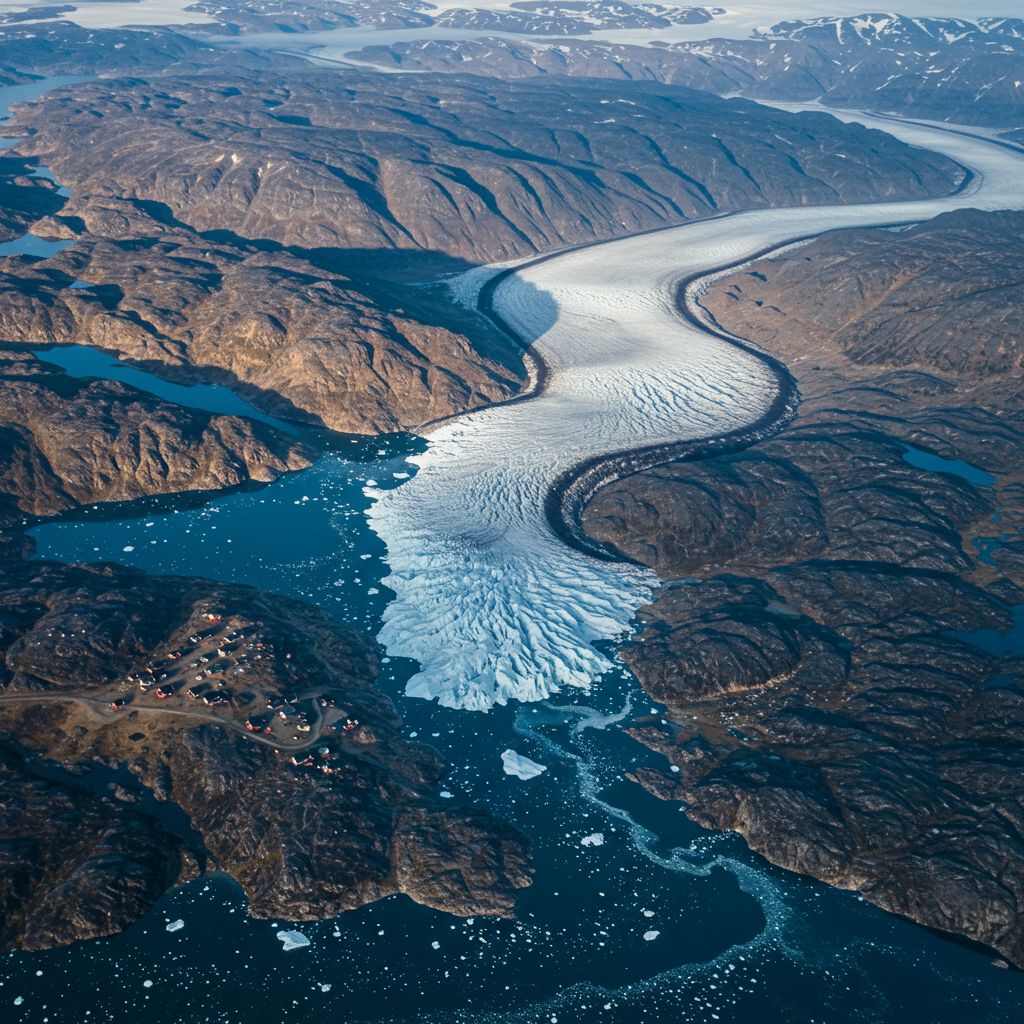
Greenland, the world’s largest island, has become an increasingly popular travel destination in recent years. With its breathtaking glaciers, untouched Arctic wilderness, and rich Inuit culture, more travelers are eager to experience this remote paradise. However, as the number of tourists grows, so do concerns about the environmental and social impact of mass tourism.
Can Greenland handle the pressure of increased tourism without sacrificing its fragile ecosystem and cultural integrity? Are Greenlanders happy about this surge, or will they resist the industry’s expansion? This article explores the dual nature of tourism in Greenland—its economic promise and the threats it poses to nature and local communities.
Read
The Rise of Tourism in Greenland
Tourism in Greenland has skyrocketed over the last decade. The melting of Arctic ice due to climate change has ironically made the island more accessible to travelers. In 2019, Greenland saw a record number of visitors, with thousands of cruise passengers and adventure tourists arriving each year.
Key drivers of tourism growth:
- Increased global interest in Arctic travel and ecotourism
- Marketing efforts from Greenland’s government and tourism boards
- Improved air connectivity with direct flights from Europe and North America
- The rise of social media showcasing Greenland’s untouched beauty
Cruise tourism, in particular, has seen an explosion. Massive ships now bring thousands of passengers to small Greenlandic towns, sparking debate about whether the industry is sustainable for the island’s fragile environment and limited infrastructure.
Greenland’s Unique Natural Beauty and Its Attraction
Greenland is a dream destination for nature lovers and adventure seekers. The island’s dramatic landscapes, filled with towering icebergs, calving glaciers, and deep fjords, offer an unparalleled Arctic experience.
Top natural attractions in Greenland:
- Ilulissat Icefjord – A UNESCO World Heritage Site known for its massive icebergs
- Northern Lights (Aurora Borealis) – Visible during winter, attracting photographers and sky watchers
- Greenland’s Wildlife – Polar bears, whales, seals, and Arctic foxes thrive in the island’s harsh climate
- Outdoor Activities – Dog sledding, kayaking, and glacier hiking offer thrilling adventures
While this pristine environment is Greenland’s biggest tourism asset, it is also its most vulnerable. The question remains: can tourism be managed without harming the very nature that draws visitors in the first place?
The Environmental Consequences of Mass Tourism
As tourism increases, so does its impact on Greenland’s fragile ecosystem. The Arctic environment is one of the most sensitive in the world, and even minor disruptions can have long-lasting effects.
Major environmental concerns include:
- Melting Glaciers and Ice Sheets – Increased human activity, including cruise ship traffic, accelerates ice loss.
- Pollution and Waste Management – Greenland’s waste disposal systems are not equipped to handle a large influx of visitors.
- Carbon Footprint – Flights and cruise ships bring high levels of carbon emissions to a region already suffering from climate change.
- Disruption to Wildlife – Noise pollution and human presence can disturb polar bears, whales, and other Arctic species.
Without strict regulations, Greenland risks turning into another over-touristed Arctic destination, where nature pays the price for economic gain.
Social and Cultural Impact of Tourism
Tourism doesn’t only affect the environment—it also impacts local communities and their way of life. Greenland’s population is small (around 56,000 people), and many towns have fewer than 1,000 residents. An influx of tourists can overwhelm local resources and disrupt daily life.
- Rising cost of living – More demand for services and housing can lead to price hikes, making life expensive for locals.
- Cultural commodification – Inuit traditions may be exploited for profit, leading to a loss of authenticity.
- Seasonal jobs vs. long-term benefits – Tourism provides jobs, but most are seasonal, offering little long-term stability.
While some Greenlanders welcome tourism as an economic lifeline, others worry about its negative impact on their cultural identity and social fabric.
Will Greenlanders Protest Against Tourism?
Greenlanders have mixed feelings about tourism. Some see it as an opportunity for economic growth, while others are deeply concerned about its consequences. In recent years, there have been growing discussions about limiting mass tourism, particularly from cruise ships.
Reasons why Greenlanders might protest tourism:
- Environmental damage to their homeland
- Lack of economic benefits for local communities
- Cultural erosion due to excessive commercialization
- Overcrowding in small towns, making life difficult for residents
In 2022, protests in Ilulissat and Nuuk highlighted frustrations with cruise ship tourism. Many locals feel that tourists come, take pictures, and leave—without contributing meaningfully to the economy. If tourism continues unchecked, future protests are likely.
Sustainable Tourism in Greenland: Is It Possible?
Despite the challenges, sustainable tourism in Greenland is possible with the right measures. Some initiatives are already in place to ensure responsible travel.
Steps toward sustainable tourism:
- Strict regulations on cruise ships – Limiting the number of visitors per port can prevent overcrowding.
- Eco-friendly accommodations – Hotels and lodges are adopting green energy solutions.
- Community-led tourism – Involving locals in tourism planning ensures that they benefit economically.
- Carbon offset programs – Encouraging tourists to offset their carbon footprint can help reduce environmental damage.
If properly managed, tourism can bring economic benefits without destroying Greenland’s natural and cultural heritage.
Greenland stands at a crossroads—tourism is booming, but it comes with serious environmental and social consequences. While the industry brings much-needed revenue, it also threatens the fragile Arctic ecosystem and traditional Inuit culture.
The key lies in responsible tourism. If Greenland enforces sustainable practices and listens to local voices, it can balance economic growth with environmental and cultural preservation. Otherwise, protests and resistance from Greenlanders may grow stronger, demanding a shift in how tourism is handled.
Greenland is not just a tourist attraction—it is a home, a culture, and a vital part of the Arctic. Tourism must respect that.
FAQs
- Is Greenland safe for tourists?
Yes, Greenland is generally safe, but visitors should be prepared for extreme weather and limited medical facilities. - What is the best time to visit Greenland?
Summer (June-August) for hiking and winter (November-March) for the Northern Lights and dog sledding. - How are cruise ships affecting Greenland?
Cruise ships contribute to pollution, overcrowding, and limited local economic benefits. - Do Greenlanders support tourism?
Opinions are mixed—some welcome it, while others fear its impact on nature and culture. - Is Greenland taking steps toward sustainable tourism?
Yes, the government is implementing eco-friendly policies, but more efforts are needed.





Leave a Reply